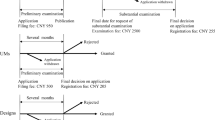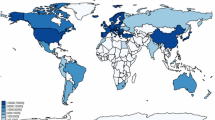Abstract
This paper examines intellectual property (IP) management in U.S. companies and addresses three questions: What are typical sources of IP? How do companies manage IP? What role do donations of IP play in IP management? We used in-depth interviews and an on-line survey to gather data. We found that firms develop their IP position from a wide variety of sources such as joint ventures, acquisitions, and consulting contracts, but internal development is still the primary source of IP. Organizationally, three structural archetypes of IP management were identified: a centralized structure, a purely decentralized IP structure and a compromise structure involving a divisional assignment where a multi-business unit or division committee oversees IP. IP donations clearly do not appear to be a major phenomenon at the present time. Our survey results suggest that tax benefits are an important driver and that recent tax law changes have diminished the incentives to donate IP. The uncertainty of tax benefits and the costs associated with IP valuation appear to be the main disincentives.




Similar content being viewed by others
Notes
A reason might be that a change in company strategic direction has identified certain IP to be outside the new areas of interest or that an acquisition has included IP that is not part of their core business.
A technology brokerage function could also be a “for-profit” endeavor such as is being pursued by “yet2.com” and NineSigma, Inc. among others.
References
Arora, A., Ceccagnoli, M., & Cohen, W. M. (2003). R&D and the patent premium. Working Paper 9431, http://www.nber.org/papers/w9431, National Bureau of Economic Research, January.
Cohen, W. M., Nelson, R. R., & Walsh, J. P. (2000). Protecting their intellectual assets: Appropriability conditions and why U.S. manufacturing firms patent (or not). Working paper no. 7552, http://www.nber.org/papers/w7552, National Bureau of Economic Research.
Daizadeh, Iraj (2003). Integrating intellectual property within the organizational social structure. Nature Biotechnology, 21(5), 573–575.
Eisenhardt, K. (1989). Building theories from case study research. Academy of Management Review, 14(4), 532–550.
Ernst, H., & Soll, J. H. (2003). Integrating market and patent portfolios for market-oriented R and D planning. Portland International Conference on Management of Engineering and Technology, pp. 121–132.
Larsson, R. (1993). Case survey methodology: Quantitative analysis of patterns across case studies. Academy of Management Journal, 36(6), 1515–1546.
Pauly, D. (2003). Mining intellectual property for profits. Chemical Engineering Progress, 99(12), 39–41.
Ruston, D. A. (1996). Buck stops here developing and managing a patent portfolio. Canadian Conference on Electrical and Computer Engineering, 2, 911–914.
Spector, Y., & Zuckerman, D. (1997). Expenditure patterns and timing of patent protection in a competitive R&D environment. Operations Research Letters, 20(5), 237–242.
Teece, D. J. (2000). Strategies for Managing Knowledge Assets: The Role of Firm Structure and Industrial Context. Long Range Planning, 33(1), 35–54.
Xu Q., Wang Y., & Wang Y. (2001). The new challenge for management: Managing intellectual capital. IEMC'01 Proceedings of Change Management and the New Industrial Revolution. IEMC-2001 (Cat. No.01CH37286), pp. 183–188.
Wolf, R. (1999). Management strategy for intellectual property. Materials Technology, 14(4), 232–233.
Acknowledgement
This project was supported by a Presidential Research Initiative Grant (PRI #42786) from Case Western Reserve University which is hereby gratefully acknowledged.
Author information
Authors and Affiliations
Corresponding author
Rights and permissions
About this article
Cite this article
Carlsson, B., Dumitriu, M., Glass, J.T. et al. Intellectual property (IP) management: organizational processes and structures, and the role of IP donations. J Technol Transfer 33, 549–559 (2008). https://doi.org/10.1007/s10961-008-9082-2
Published:
Issue Date:
DOI: https://doi.org/10.1007/s10961-008-9082-2




